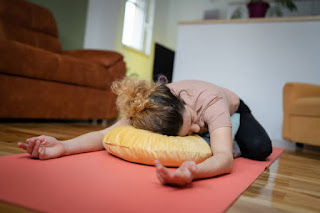The Best Guide to Learn How to Meditate
The Best Guide to Learn How to Meditate
Learn How to Meditate

Introduction to Meditation
Understanding the Basics of Meditation
Meditation is a timeless practice embraced by cultures around the world for centuries. At its core, meditation is about achieving mental clarity and emotional calmness through focused attention and awareness. Whether you’re seeking to reduce stress, enhance your mental health, or find moments of peace in your daily life, meditation offers a path to a more mindful and balanced existence.
One of the beautiful aspects of meditation is its versatility. There is no single “correct” way to meditate, and the practice can take many forms to suit individual preferences and lifestyles. From basic breath meditation and mindfulness practices to loving-kindness and body scan techniques, there are numerous methods to explore and incorporate into your routine. This flexibility allows you to tailor your meditation practice to your unique needs and goals, making it a highly personal journey of self-discovery and inner peace.
In this guide, we will delve into various types of meditation, the benefits it offers, and practical steps to start your own practice. By understanding the basics and experimenting with different techniques, you can find the approach that resonates with you and cultivate a regular meditation practice that enriches your life.
Understanding the Basics of Meditation
Meditation is a practice that helps calm your mind and develop the ability to stay in the present moment. It is a skill that can be cultivated with regular practice and offers a multitude of benefits for both the mind and body.
One of the foundational elements of meditation is the concept of mindfulness, which involves being fully aware and present in the moment. This means paying attention to your thoughts, feelings, and sensations without judgment. By cultivating this awareness and practicing mindfulness, you can learn to observe your mental and emotional states more clearly and respond to them with greater calmness and clarity.
There is no one right way to meditate, and meditation can take on many forms. Some people may prefer to sit quietly and focus on their breath, while others might find walking meditation or guided meditations more effective. The key is to find a method that works for you and fits into your lifestyle.
Benefits of Meditation for Mental Wellbeing
Meditation offers numerous benefits for mental wellbeing. Regular practice of meditate meditation can significantly reduce stress and anxiety levels. By creating a habit of mindfulness, individuals learn to manage their thoughts and emotions more effectively, leading to improved mental health.
Scientific studies have shown that meditation can increase the brain’s grey matter, which is associated with memory, empathy, and emotional regulation. This enhancement of cognitive functions helps individuals handle daily challenges more gracefully.
Additionally, meditation fosters a sense of inner peace and tranquility. This mental clarity allows for better decision-making and enhances overall well-being. Regular meditators often report feeling more balanced and less reactive to external stressors.
Meditation also promotes a positive outlook on life. By consistently engaging in mindfulness practices, individuals cultivate a deeper appreciation for the present moment, reducing tendencies towards negative thinking patterns.

Preparing for Meditation
Setting Aside Time for Meditation
Creating a regular meditation schedule is crucial for building a consistent practice. Aim to set aside about 20 minutes each day, preferably at the same time, to help integrate and practice meditation into your daily routine. This consistency reinforces the habit and maximizes the benefits of meditation.
Finding a Comfortable and Quiet Space
A comfortable and quiet environment is essential for effective meditation. You don’t need any specialist equipment; simply find a place where you can sit comfortably. This could be a cushion on the floor, a chair, or even your bed. The key is to ensure you are in a position that allows you to relax without feeling stiff or uncomfortable.
Creating a Conducive Environment for Meditation
Your meditation space should support your practice. Ensure good posture by sitting upright, whether on a meditation cushion or a chair. You might also consider using a meditation bench or cushion to support your back and help maintain a comfortable position. The environment should be free from distractions, providing a serene atmosphere where you can focus on your practice.
Types of Meditation
Breath Meditation: Focusing on the Breath
Breath meditation is one of the simplest and most accessible forms of meditation. It involves concentrating on your breathing, observing the sensation of each inhale and exhale. This simple meditation practice helps anchor your mind, reducing distractions and promoting a sense of calm. Regular breath meditation can significantly reduce stress and improve overall well-being.
Mindfulness Meditation: Cultivating Awareness
Mindfulness meditation involves paying attention to the present moment without judgment. This practice encourages you to observe your thoughts, emotions, and sensations as they arise, fostering a deeper awareness of your inner experiences. By regularly practicing mindfulness meditation, you can develop greater emotional resilience and mental clarity.
Loving-Kindness Meditation: Practicing Compassion
Loving-kindness meditation focuses on generating feelings of compassion and kindness towards yourself and others. This practice involves silently repeating phrases of goodwill, such as “May I be happy” or “May you be safe,” directed towards different people, including yourself, loved ones, and even those you find challenging. Loving-kindness meditation can enhance emotional well-being and foster a more compassionate outlook on life.
Body Scan Meditation: Relaxing the Body
Body scan meditation involves systematically focusing on different parts of your body, from your toes to your head. This practice helps you become more aware of physical sensations and tensions, promoting relaxation and stress relief. By regularly engaging in body scan meditation, you can improve your ability to relax and reduce physical stress symptoms.
Walking Meditation: Bringing Mindfulness to Movement
Walking meditation combines physical movement with mindfulness practice. It involves walking slowly and deliberately, paying close attention to the sensations of each step and your surroundings. This practice allows you to bring mindfulness into everyday activities, helping to reduce stress and enhance your overall sense of well-being.

Starting Your Meditation Practice
A Step-by-Step Guide to Meditation
To begin your meditation journey, it is important to find a peaceful location where you can meditate comfortably without distractions. This could be a quiet corner of your home, a dedicated meditation space, or a serene spot outdoors. Wearing loose, comfortable clothing and removing your shoes can help you feel more relaxed and grounded.
When starting out, decide on a manageable meditation duration. For beginners, starting with just five minutes can be effective. As you become more comfortable with the practice, you can gradually increase the duration of your sessions. Mindfulness-based stress reduction, which combines mindfulness with yoga, has been shown to improve sleeping habits and reduce stress through intensive meditation-based treatments.
Bringing mindfulness into your meditation practice involves focusing on your senses and the present moment. Start by noticing what you can hear, see, smell, and feel. This sensory awareness helps anchor your mind and keeps you engaged in the practice.
As you begin your meditation session, take deep breaths, visualizing your breath filling your lungs and leaving again. Perform a body scan, focusing on each part of your body and feeling your muscles relax. This practice helps you release tension and become more attuned to your physical sensations.
Meditation is a practice that requires patience and persistence. It’s normal for your mind to wander during meditation. When this happens, gently bring your focus back to your breath or chosen point of focus. Over time, this practice of returning to the present moment helps build your concentration and mindfulness.
Bringing Mindfulness into Meditation
Bringing mindfulness into your meditation practice involves focusing on your senses and being fully present in the moment. Start by noticing what you can hear, see, smell, and feel. This sensory awareness helps anchor your mind and keeps you engaged in the practice. Pay attention to the ambient sounds around you, the light and colors in your environment, any scents in the air, and the sensations you feel in your body. This mindfulness helps prevent your mind from wandering and enhances the depth of your meditation.
Starting Your Meditation Session
To start your meditation session effectively, begin by finding a comfortable position. Whether you choose to sit cross-legged on the floor, on a chair, or lie down, ensure that you can maintain this posture without strain for the duration of your session. Good posture is important, as it helps keep your mind alert and your body relaxed.
Start by breathing deeply. Inhale slowly and deeply through your nose, allowing your lungs to fill completely. Visualize the breath traveling through your body, bringing relaxation and calmness with each inhale. Then, exhale slowly and completely, visualizing any tension or stress leaving your body with the breath.
Next, perform a body scan to bring deeper relaxation. Begin by focusing on your toes, noticing any sensations or tension. Gradually move your attention upward, through your feet, legs, abdomen, chest, arms, neck, and head. As you focus on each body part, consciously relax your muscles, releasing any tightness or discomfort. This body scan helps you become more aware of physical sensations and promotes a deeper state of relaxation.
Overcoming Challenges
Dealing with a Wandering Mind
A wandering mind is a natural part of meditation practice, so don’t worry if your mind drifts. It’s common for thoughts to arise, especially when you’re just starting out. The key is to notice when your mind wanders and gently bring your focus back to your breath or chosen point of concentration. Each time you redirect your focus, you’re training your mind to become more aware and centered, enhancing your ability to stay present.
Managing Physical Discomfort
Physical discomfort can be a barrier to effective meditation. To minimize this, try stretching before you begin your session to prevent stiffness and promote relaxation. This can include gentle yoga stretches or simple movements to loosen up your muscles. If you experience discomfort during meditation, don’t hesitate to adjust your position or take a short break to stretch. It’s important to listen to your body and make necessary adjustments to stay comfortable.
Coping with External Distractions
External distractions can disrupt your meditation practice. Finding a quiet place to meditate is crucial to minimizing these interruptions. If you live in a noisy environment, consider using earplugs or playing white noise to block out disturbances. Establishing a regular meditation time can also help reduce interruptions and create a more consistent practice. By meditating at the same time each day, you can train both your mind and your surroundings to accommodate this quiet time, making it easier to find and maintain your focus.

Making Meditation a Habit
Creating a Routine for Meditation
Establishing a regular meditation routine is essential for building a lasting practice. Try to meditate at the same time each day, whether it’s in the morning to start your day with clarity or in the evening to unwind. Consistency helps to reinforce the habit, making it a natural part of your daily routine. By integrating meditation into your everyday life, you create a sense of structure that supports your practice.
Taking Small Steps to Establish a Practice
Begin with small, manageable sessions. Dedicate yourself to a five-minute meditation practice each day. As you become more comfortable, gradually increase the duration. This incremental approach prevents feelings of overwhelm and helps sustain your commitment. Over time, you will find that extending your meditation sessions becomes a natural progression, allowing you to deepen your practice without pressure.
Meditating with Others for Support
Practicing meditation with others can provide additional support and motivation. Joining a meditation group or finding a meditation buddy can enhance your commitment and provide a sense of community. Sharing your experiences and challenges with others can offer valuable insights and encouragement. Group meditation sessions can also introduce you to new techniques and perspectives, enriching your practice and helping you stay motivated.
Frequently Asked Questions
What to Do with Your Eyes, Hands, and Body During Meditation
When meditating, you can choose to keep your eyes open or closed based on what feels most comfortable for you. Keeping your eyes closed can help minimize distractions and deepen your focus. However, if you prefer to keep them open, try softening your gaze and looking downward to reduce visual stimuli.
Your hands should rest in a comfortable position, such as on your lap or on the armrests of a chair. Many people find placing their hands palms-up or palms-down on their knees to be relaxing and natural. The key is to avoid tension and allow your hands to rest naturally.
Maintain a relaxed yet upright posture. Whether you are sitting cross-legged on the floor, on a meditation cushion, or on a chair, ensure your back is straight but not rigid. This alignment helps you stay alert and prevents discomfort during longer sessions.
How Long to Meditate and How Often
The length and frequency of your meditation practice can vary depending on your goals and preferences. For beginners, starting with just five minutes per session can be effective. As you become more comfortable with the practice, gradually increase the duration to 20 or 30 minutes.
Consistency is more important than duration. Aim to meditate daily, even if only for a few minutes. Regular practice helps you build a strong foundation and maximizes the benefits of meditation for your mental and emotional well-being.
What to Do with Thoughts and Distractions During Meditation
It’s natural for your mind to wander during meditation. When this happens, gently bring your focus back to your breath or chosen point of focus. The goal is not to eliminate thoughts but to become aware of them and return to the present moment.
Don’t try to force your mind to stay focused. Instead, allow it to gently come back to the present moment each time it wanders. This practice of noticing and returning helps build your concentration and mindfulness over time.

Next Steps
Guided Meditations for Beginners
If you’re new to meditation, guided meditations can be an excellent resource to help you get started. These guided sessions provide step-by-step instructions and can introduce you to various meditation techniques. Explore our guided meditation resources, featuring various styles and benefits, to enrich your daily life through meditation. To kickstart your journey, try our free 5-day meditation guide for beginners, which delivers essential insights and guided practices directly to your inbox.
Reading to Support Your Meditation Practice
Enhance your meditation practice by exploring a wealth of meditation teachings. Numerous books, articles and podcasts are available that cater to both new meditators and seasoned practitioners. Popular publications on meditation practice offer insights into different techniques, the science behind meditation, and personal stories of transformation. These resources can deepen your understanding and inspire your practice.
Deepening Your Meditation Practice with Mindfulness and Loving-Kindness
As you become more comfortable with meditation, consider exploring deeper practices such as mindfulness and loving-kindness meditation. Mindfulness involves paying close attention to your thoughts, feelings, and sensations without judgment, helping to cultivate a deeper awareness of your inner experiences. Loving-kindness meditation focuses on generating feelings of compassion and kindness towards yourself and others, enhancing your emotional well-being.
Learn about the benefits of mindfulness and compassion from experienced teachers. Discover how these practices can increase feelings of kindness and compassion, contributing to your overall well-being and spiritual growth. Remember, meditation is a practice, not a performance. Approach it with patience and an open heart, and allow your practice to evolve naturally over time.





